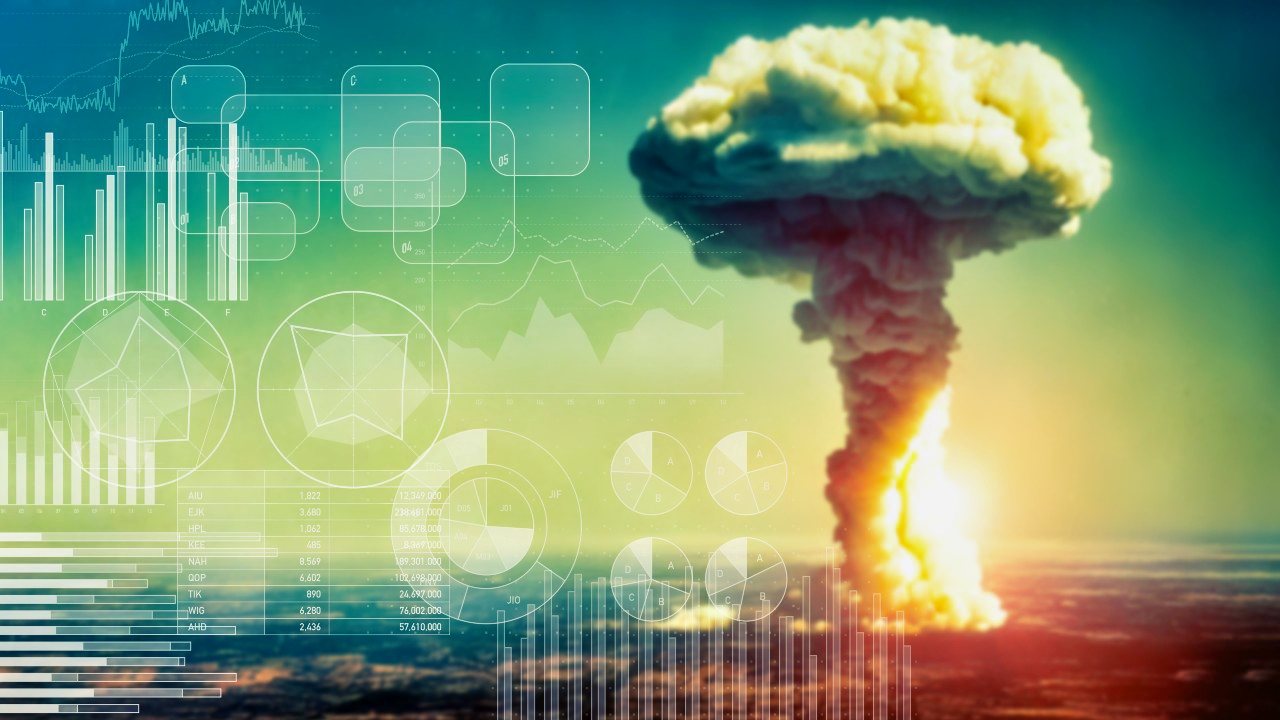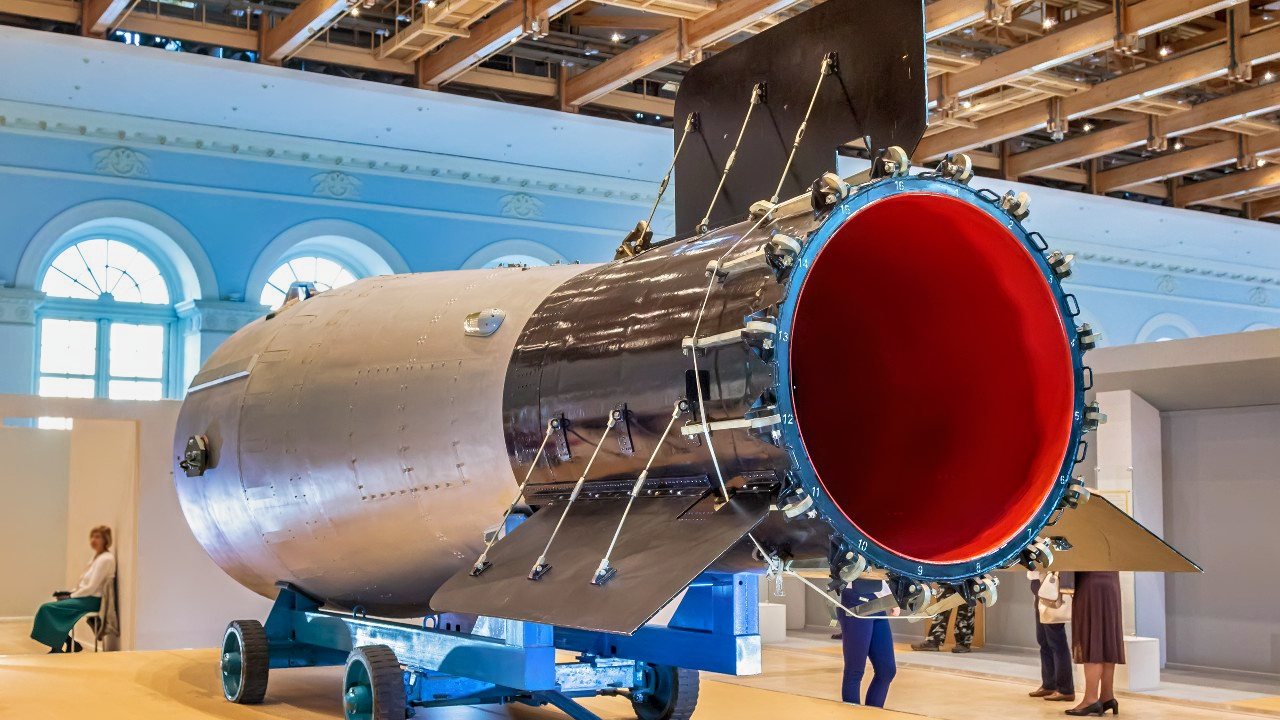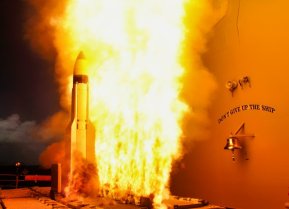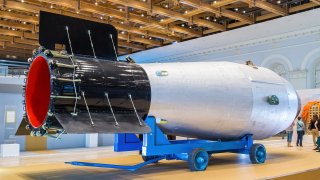Tsar Bomba: How Russia Detonated the Biggest Nuclear Weapon Ever
In 1961, the USSR conducted an atmospheric test of the Tsar Bomba. The “emperor of bombs” was named for its unparalleled destructive potential, able to yield a blast of 50 megatons. It was the biggest nuclear weapons test ever in terms of yield or explosive power.
Tsar Bomba nuclear test was the biggest ever: Since Russia first invaded Ukraine nearly two years ago, President Vladimir Putin and other Kremlin officials have routinely threatened nuclear escalation. In October, Russia’s military carried out a “massive” retaliatory nuclear strike drill following the parliament’s decision to revoke the country’s ratification of a global ban on nuclear testing.
As tensions continue to mount in eastern Europe, threats of this nature are expected to escalate. Considering Russia’s deep history involving nuclear weapons testing, Putin’s sharp focus on this front is not surprising. In fact, the largest thermonuclear weapon ever created was tested by the former Soviet Union during the Cold War.
A history of the Soviet’s “Emperor of bombs”
In 1961, the USSR conducted an atmospheric test of the Tsar Bomba. The “emperor of bombs” was named for its unparalleled destructive potential, able to yield a blast of 50 megatons. Comparably, the bomb that the U.S. military dropped on Nagasaki, Japan, was 2,000 times less powerful than this. In the decade prior, the U.S. had an unconditional superiority over the Soviets in nuclear weapons.
However, no effective means of delivering nuclear warheads existed at this time, preventing the USSR from possessing a realistic retaliatory strike capability. Following the U.S. atomic bombings of Hiroshima and Nagasaki in 1945, Soviet Premier Joseph Stalin ordered an intensification of nuclear research the same year. By 1949, the USSR tested its first atomic weapon. While the U.S. prioritized designing accurate delivery systems for small to medium size atomic devices, the USSR focused on developing larger devices.
A team of physicists, including Andrei Sakharov, Viktor Adamski, Yuri Babayev and Yury Trutnev designed the USSR’s “AN602” thermonuclear aerial bomb. Measuring at 8 meters long, the bomb’s diameter was about 2 meters and it weighed around 25 tons (60,000 pounds). The device’s large size made it challenging to handle. In fact, the bomb was so large that it could not be loaded onto any airframe that the Soviet Union possessed at the time.
As a three-stage hydrogen bomb, the Tsar Bomba used a fission-type atomic bomb as the first stage to compress the thermonuclear second stage. Then, the energy produced from the explosion is directed to compress the thermonuclear third stage. Initially, Soviet engineers wanted the Tsar Bomba to yield as much as 100 megatons.
However, the dangerous nuclear fallout associated with such a large number disrupted this. A lead tamper was incorporated in the third stage of the device instead of a uranium-238 fusion tamper to rectify this.
How was the Tsar Bomba test carried out?
The USSRs Tupolev Tu-95 strategic bomber was ultimately designated to deliver the weapon from 34,000 feet, where the bomb would be attached via parachute to slow its descent. This risky mission gave the Tupolev pilots a mere 50% chance of survival. When the device was tested, the pilots nearly did not make it. While the Tsar Bomba did not yield the originally intended 100 mg, its 50mg yield was still remarkable. The blast from this device was at least ten times more powerful than all of the ordnance exploded during the entire Second World War, according to the National WWII museum.

The test occurred above the cape Sukhoy Nos of Severny Island, Novaya Zemlya near the Mityshikha Bay Nuclear Testing Range in the northern Arctic Circle.
According to an eyewitness, “The clouds beneath the aircraft and in the distance were lit up by the powerful flash. The sea of light spread under the hatch and even clouds began to glow and became transparent. At that moment, our aircraft emerged from between two cloud layers and down below in the gap a huge bright orange ball was emerging. The ball was powerful and arrogant like Jupiter. Slowly and silently it crept upwards... Having broken through the thick layer of clouds it kept growing. It seemed to suck the whole Earth into it. The spectacle was fantastic, unreal, supernatural.”

If a weapon of this magnitude were ever dropped on a large U.S. city like New York, Washington D.C. or San Francisco, their metropolitan areas plus huge swaths of surrounding suburbs would be completely obliterated.
Once the Tsar Bomba was dropped, nuclear tests continued, and the then-Soviet leader Nikita Khrushchev ordered the detonation of another megaton bomb a few months later. In 1962, a total of 79 nuclear bombs were detonated, indicating a dangerous rise in escalation.\
In 1963, the U.S., the United Kingdom, and the USSR signed the Partial Nuclear Test Ban Treaty, which prevented each country from testing devices in the atmosphere, outer space, and underwater. Eventually, more countries would sign on to join this treaty.
About the Author
Maya Carlin, National Security Writer for The National Interest, is an analyst with the Center for Security Policy and a former Anna Sobol Levy Fellow at IDC Herzliya in Israel. She has by-lines in many publications, including The National Interest, Jerusalem Post, and Times of Israel. You can follow her on Twitter: @MayaCarlin.
All images are Shutterstock.


